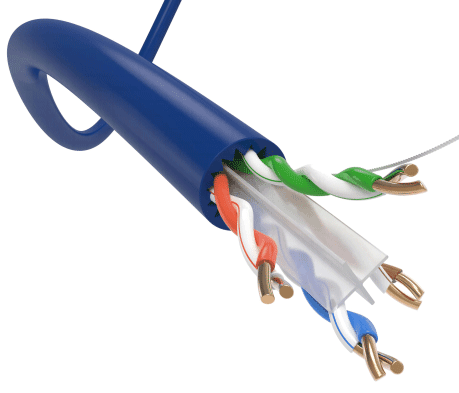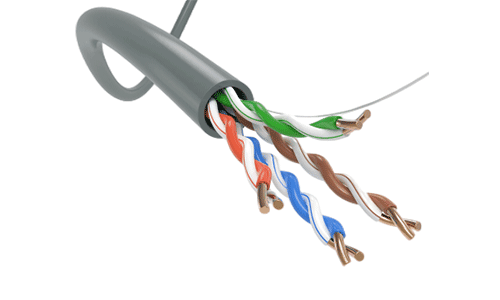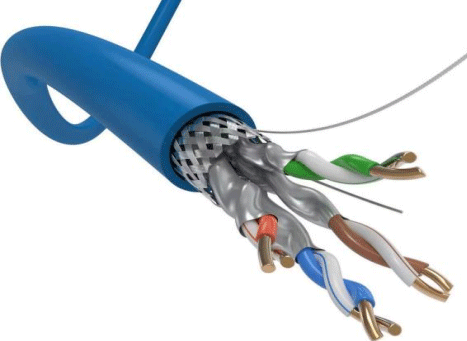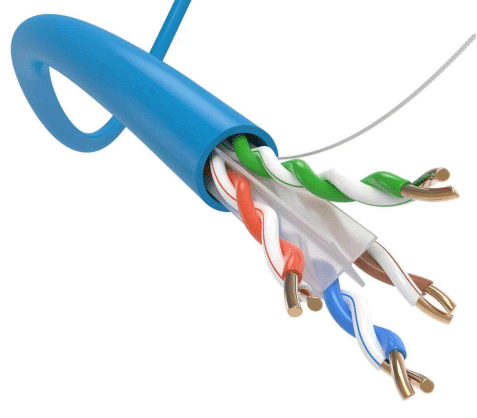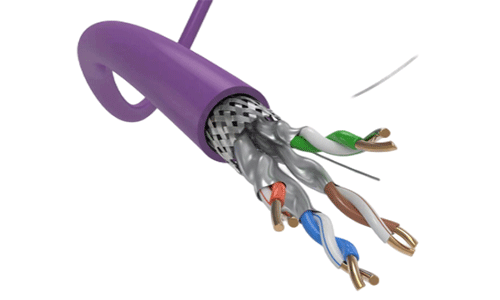How to choose an Ethernet cable
Choose the best Ethernet cable for your home or work environment.
What does Cat mean?When you start looking at specific Ethernet cables to match your needs, you'll quickly notice that they’re divided by “Cat” numbers. What does that mean?
“Cat” simply stands for “category.” The number that follows indicates the specification version supported by the cable. A general rule of thumb is that higher numbers represent faster speeds and higher frequencies, measured in megahertz (MHz). As is the case with most technologies, newer cables typically support higher bandwidths and therefore increased download speeds and faster connections.
More advanced Cat numbers may also indicate more reliable performance, as well as better performance over distance. You’ll notice that Ethernet cables typically have two speed ratings, one at around 10 to 30 meters and one at 100 meters, because performance does typically drop off over long distances.
Ethernet cable typesIf you want, you can just choose the latest Cat number (8 at the moment) for future-proofing and not worry about the rest. Or, you could take a look at what each Category is suitable for in our handy list below:
Cat 1 through Cat 5We’re skipping these categories because they are very old, technically not even official Ethernet standards, and they have been discontinued or are too slow to be usable.
Cat 5eThe “e” in Cat 5e stands for “enhanced.” There are no physical differences between Cat 5 and Cat 5e cables. However, manufacturers build Cat 5e cables under more stringent testing standards to eliminate unwanted signal transfers between communication channels (crosstalk). Cat 5e is currently the most commonly used cable, mainly due to its low production cost and support for speeds faster than Cat 5 cables.
Cat 6The Cat 6 Ethernet cable supports higher bandwidths than Cat 5 and Cat 5e cables. They’re tightly wound and usually outfitted with foil or braided shielding. Said shielding protects the twisted pairs of wires inside the Ethernet cable, which helps prevent crosstalk and noise interference. Cat 6 cables technically support speeds up to 10Gbps for up to 55 meters. That speed comes with a price, however, as a Cat 6 cable is more expensive than Cat 5 and Cat 5e variants.
Cat 6aThe “a” in Cat 6a stands for “augmented.” Cables based on this standard are a step up from Cat 6 versions by supporting twice the maximum bandwidth. They’re also capable of maintaining higher transmission speeds over longer cable lengths. Cat 6a cables come shielded, and the sheathing — which is thick enough to eliminate crosstalk — makes for a much denser, less flexible cable than Cat 6.
Cat 7 and Cat 7aCat 7 and Cat 7a cables are high-performing but tend to be useless for most people. Let’s get into why:
Cat 7 cables support higher bandwidths and significantly faster transmission speeds than Cat 6 cables — much more akin to Cat 6A. Cat 7 cables reach up to 100Gbps at a range of 15 meters, making them one of the most capable categories of Ethernet cables. Cat 7 cables are always shielded, and they use a modified GigaGate45 connector, which is backward compatible with RJ45 Ethernet ports.
That modified GG45 connector is a proprietary component, though, and while the backward compatibility helps a little, there are still issues with following previous Ethernet standards. This led to most manufacturers avoiding the Cat 7 standard, which is why it’s quite rare today. That difficulty led to the development of Cat 6a — and a lot of marketing confusion since some sellers started referring to Cat 6a as the new Cat 7. Always check the specs before you buy — and when in doubt, we suggest just going for Cat 8 instead.
Cat 7a offers one of the highest-specification Ethernet cables you can buy, but it’s not widely available and offers only a few supporting networking hardware options. The 7a standard was designed to support 40 Gigabit Ethernet connections up to 50 meters and — just like Cat 7, but with improvement to the overall bandwidth — more than 50%. This improvement may be useful in some instances, but Cat 7a cables are far more expensive than any other option and its lack of industry support is something you can avoid by using Cat 8 cables.
Cat 8This standard promises a maximum frequency of 2,000MHz and speeds of up to 40Gbps at 30 meters. That high frequency also requires shielding, meaning you’ll never find unshielded Cat 8 cables. Even more, Cat 8 supports two connectors. Thus it only allows for three connected cables with a combined length of 30 meters. Cat 8 cables cost more than other options, but they have become more affordable in recent years.
Cat 8 also is the only cable to meet the latest IEEE standards (the aforementioned 40Gbps and 2,000MHz frequency), which is one reason it’s a great choice for future-proofing, despite the significantly higher costs. As a bonus, it also skips the connector mess of Cat 7.
Which Ethernet cable is best?This depends on your needs, but for most home users, Cat 6 will be more than sufficient for high-speed networking, fast internet connectivity, and low-latency tasks like gaming. If you want greater performance over longer distances — over 150ft — then Cat 6a is worth considering.
If you want to completely future-proof your network, or are looking for datacenter-level performance, then Cat 8 is an option too, though more expensive. Ignore Cat 7 and its derivatives, it’s not worth the hassle of its additional compliance concerns.
If you are installing an Ethernet cable in a busy environment with lots of electronic devices, wireless signals, or leaky microwaves, then make sure to investigate Ethernet cables with additional shielding. These tend to be newer categories of cable, though not always.



